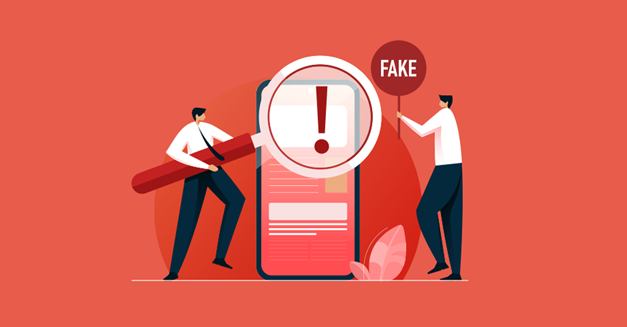SME Marketing: What It Is And How You Can Automate It
Are you familiar with SME marketing? If not, don’t worry – you’re not alone! It is a relatively new term and one that can be difficult to define. This type of marketing is one of the most important yet least understood aspects of online marketing.
Many small business owners believe that if they build a website, customers will magically find them. But without an effective SME marketing strategy, your website is nothing more than a digital billboard in the middle of nowhere.
Despite the lack of a precise definition, there’s no doubt that small and medium-sized marketing is an important tool for small businesses.
In this blog post, we’ll explore what SME marketing is and how you can automate it using online tools.
Let’s start.
What is SME Marketing?
SME marketing is promoting products or services to small and medium enterprises. This can be done through various channels, such as online advertising, PR, or direct mail. This type of marketing aims to raise awareness of the company and its offerings among potential customers.
To be successful, SME marketing campaigns must be carefully planned and executed. They should also be tailored to the specific needs of the target audience.
Using email marketing campaign tools can be a great way to reach out to potential customers and keep them updated on your latest products and services. However, it is important to use these tools correctly in order to maximize their effectiveness.
Marketing for SMEs and SMBs
Marketing for small and medium businesses can be a challenge. On the one hand, you have limited resources and a smaller target audience. On the other hand, you have the opportunity to be more agile and creative in your marketing approach.
The key is to focus on strategies that will maximize your impact while staying within your budget.
-
Content Marketing Approach
One effective approach is to focus on content marketing. It can involve creating blog posts, infographics, or even videos that educate your audience about your products or services.
-
Strengthen Industrial Relationships
Another strategy is to build relationships with other businesses in your industry. It can help you get referrals and cross-promote your products or services. By taking a strategic marketing approach, you can ensure that your small or medium business achieves its maximum potential.
Overcoming SME Digital Marketing Challenges
As a business owner, you know that it is essential to reach your target market. However, with so many digital marketing channels available, it can be difficult to know where to start.
If your target market is in Kentucky, Nebraska, or Texas, here are some SME digital marketing channels that you may want to consider:
-
Social Media

Platforms like Facebook and Twitter offer an excellent way to connect with potential customers in your area. Make sure to create informative and engaging content that will encourage people to follow your SME.
-
Email marketing

This channel allows you to reach a large audience with personalized messages. Use email drip campaigns to nurture leads and build relationships with potential customers. Email marketing campaign tool are essential to send promotional messages and keep the customers in loop.
-
Search Engine Optimization

Ensure that your SME website appears at the top of search engine results pages for relevant keywords by implementing effective SEO strategies. This will help you attract more web traffic and convert leads into customers. By utilizing these digital marketing channels, you will be able to reach your target market and grow your business.
Small Business Segmentation
Small business segmentation can be tricky, as there are many factors to consider and no one-size-fits-all solution. However, segmentation is an important tool for businesses of all sizes, as it allows you to tailor your marketing and sales efforts to better meet the needs of your target
By taking the time to segment your small business prospects, you can ensure that you are making the most efficient use of your marketing and sales resources.
Following are the factors businesses can use to segment their customers.
-
Age
-
Gender
-
Income
-
Location
-
Interests.
Dividing customers into segments makes it easier to target them with specific marketing messages that are more likely to resonate. As a result, businesses can see a higher return on investment from their marketing efforts and build stronger relationships with their customers.
As Xoopah’s contact hub provides you with complete customer profiles, segmentation won’t be an issue anymore.
How to Automate SME Marketing; 2 easy ways
SME marketing can be a time-consuming process, especially if you’re managing everything yourself. Fortunately, there are several ways to automate it to make your life easier.
-
Email Marketing Platforms
One way to automate your SME marketing is to use an email marketing platform such as MailChimp or Constant Contact. These platforms allow you to create and send newsletters, email campaigns, and other automated content.
You can also utilize Xoopah’s email marketing tools to automate your email and text marketing campaigns. You will also be able to send personalized messages through this tool.
-
Social Media Management Tools
In today’s business world, it’s more important than ever to stay in touch with your customers. Whether you’re sending out updates on new products or services, or simply letting them know about a sale, it’s important to keep the lines of communication open. However, manually managing customer communications can be a time- consuming and expensive process. That’s where Xoopah’s customer communication management tool comes in.
It enables businesses to leverage email marketing and SMS marketing to reach their customers quickly and easily. As a result, you’ll be able to effectively manage your customer communications without breaking the bank.
SME Digital Marketing Strategy
Follow this step-by-step guide to designing an effective SME digital marketing strategy for your business.
-
Understand the Brand
Before you can create an effective marketing strategy for your SME, you need to understand your brand. What are your core values? What makes you unique? Once you have a clear understanding of your brand, you can begin to develop a marketing strategy that will help you reach your target audience. There are a number of ways to reach potential customers, including online advertising, PR, and events. By understanding your brand and knowing your audience, you can develop an effective marketing strategy that will help your SME succeed.
-
Creating Customer Personas
The first step in creating customer personas is understanding who your target audience is. This means going beyond the basics of age, gender, and location.
-
What are their interests?
-
What motivates them?
-
What challenges do they face?
Once you have a good understanding of your target audience, you can start to build out your personas to design an effective digital marketing strategy. As you keep track of customer interactions through customer management tools, it would be easier to build personas based on customer communication.
-
Competitive Analysis
Any small or medium-sized business looking to create an effective marketing strategy must first conduct a competitive analysis. This process involves taking a close look at the strategies and tactics of your competitors to find areas where you can improve or fill gaps in the market.
For instance, if your competitor is targeting a specific demographic with their marketing, you may want to consider doing the same. Or, if they are using a particular type of messaging that resonates with customers, you may want to adopt a similar approach.
-
Social Media Strategy
According to the most recent data from the US Census Bureau, small and medium-sized businesses make up a significant percentage of businesses in Nebraska, Kentucky, and Texas. In Nebraska, SMEs account for 99.1% of all businesses, while in Kentucky they make up 99.3% of all businesses. In Texas, SMEs account for 99.8% of all businesses. This data shows that SMEs are a vital part of the economy in all three states.
However, with so many different social media platforms to choose from, it can be difficult to create an effective social media strategy.
-
The first step is to identify which platforms are most popular with your target audience.
-
Then, you need to create engaging content that will capture their attention and encourage them to share it with their followers.
-
Finally, you need to monitor your social media activity and track your results so that you can adjust your strategy as needed.
What are the best marketing tools for small businesses?
-
Email marketing automation platform
Email marketing automation platforms are software programs that enable businesses to automate their email marketing campaigns. These platforms typically provide a wide range of features, including the ability to create and send newsletters, auto-respond to customers, and track the results of campaigns.
-
Social scheduler platform
A social scheduler platform helps businesses and individuals automate their social media posting. The scheduler connects to the user’s social media accounts and automatically posts content at the times that the user has selected.
-
Marketing Project Management platforms
As the world of marketing becomes increasingly complex, the need for effective project management platforms has never been greater. Marketing project management platforms provide a centralized hub for team collaboration, project tracking, and client communication.
How do you measure the success of your marketing tools?
There are several ways to measure the success of your marketing tools.
-
One common method is to track the number of leads or sales that can be attributed to each tool.
-
Another way to measure success is to track engagement metrics such as likes, shares, and comments.
-
Finally, you can also look at ROI (return on investment) to see how much revenue your marketing tools are generating relative to the amount of money you’re spending on them.
Here’s how Xoopah can help you with SME Digital Marketing

Small and medium-sized businesses (SMEs) have to work hard to compete with larger businesses in today’s digital world. Customers are increasingly using the internet to research products and services, and they often make their purchase decisions based on what they find online. That’s why SMEs need to have a strong digital marketing strategy.
However, many SMEs don’t have the time or resources to keep up with the latest digital marketing trends. That’s where Xoopah can help. We provide an all-in-one platform that provides business management tools to clients. Through our business growth tools, you can manage your marketing campaigns and boost your online presence.
3 Reasons Why you should choose Xoopah

-
Contact Hub
Our clients gain access to customer profiles through our contact hub which enables them to segment them into groups for effective targeted marketing.
-
Business Management Tools
By linking your Google My Business account with Xoopah, you can instantly connect and respond to your customers via a single inbox, thus it facilitates customers to boost their online visibility.
-
Review Management Tools
Today reviews are more effective in marketing your products or services than conventional marketing tools. Xoopah’s review management tools enable you to gather, respond, and manage reviews through a single platform. Once the reviews are up on Google My Business, you gain a credible position in the market.
Conclusion
SME marketing is one of the most efficient and effective ways to market your business. It can be automated with the right tools, which is why we at Xoopah offer our customers a suite of powerful marketing automation tools. We want to make sure that you have everything you need to succeed, so sign up for a demo today. With Xoopah by your side, there’s no limit to what you can achieve.
FAQs
Q1. What does SME stand for in digital marketing?
When it comes to digital marketing, SME stands for small and medium-sized enterprises.
Q2. What is the difference between SME and SMB?
There is often confusion around the difference between small and medium-sized enterprises (SMEs) and small and medium-sized businesses (SMBs). The main distinction between the two is that SMEs are classified as businesses, while SMBs are defined as enterprises. In practical terms, this means that SMEs are typically larger and more established than SMBs.
Q3. What are the different types of SMEs?
There are many different types of small and medium enterprises (SMEs), each with its characteristics.
For example, manufacturing SMEs are typically defined as businesses with fewer than 250 employees. In contrast, service-based SMEs are usually defined as businesses with fewer than 50 employees.
Regardless of their size or sector, all SMEs share one common goal: to grow and succeed in the ever-changing business world.
Q4. How big is the SMB market?
There is no definitive answer to this question, as the size of the SMB market can vary greatly from state to state. However, recent studies have estimated that the SMB market in Kentucky, Texas, and Nebraska is worth a combined total of $8.6 billion.
This figure includes businesses with less than 500 employees, which account for 98% of all businesses in the United States. While this number does not include every small business in these three states, it does give a good indication of the overall size of the SMB market in these areas.






